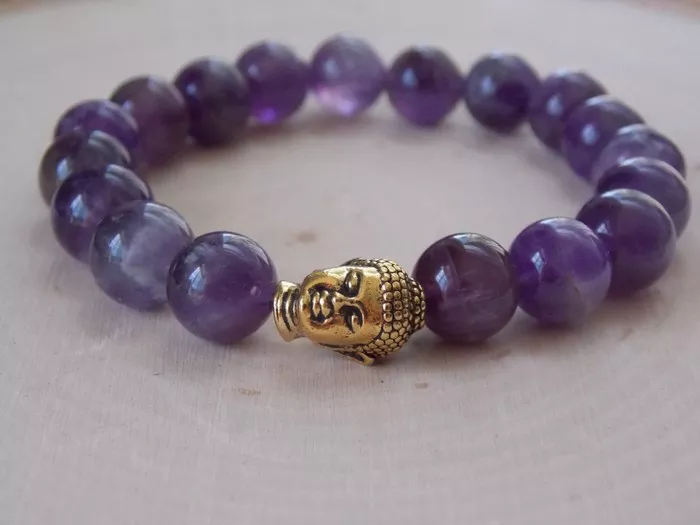Amethyst, a stunning purple gemstone long celebrated for its beauty and purported metaphysical properties, has a rich history in both jewelry and alternative medicine. While it is revered for its potential benefits, such as promoting calmness, clarity, and spiritual growth, there are also considerations regarding its potential disadvantages. This article delves into the various aspects where wearing amethyst may not be suitable or advisable for certain individuals.
Introduction to Amethyst
Amethyst belongs to the quartz family and derives its distinctive purple color from traces of iron and other minerals within its crystal structure. Throughout history, it has been prized for its rarity and captivating hue, often used in jewelry, carvings, and religious artifacts. Beyond its aesthetic appeal, amethyst has been associated with numerous metaphysical and healing properties, making it a popular choice in holistic practices.
The Appeal of Amethyst
The allure of amethyst extends beyond its physical appearance. Many believe it possesses spiritual and healing attributes, including:
Spiritual Protection: Amethyst is often touted as a protective stone, capable of warding off negative energies and promoting a sense of spiritual clarity.
Emotional Balance: It is said to have a calming effect, helping to soothe stress, anxiety, and emotional turmoil.
Intellectual Clarity: Amethyst purportedly enhances cognitive functions, aiding in decision-making and problem-solving.
Physical Healing: Some alternative medicine practitioners believe in its ability to alleviate physical ailments such as headaches and insomnia.
These perceived benefits have contributed to its popularity in both the spiritual and wellness communities. However, like any gemstone or treatment, there are potential drawbacks and considerations to wearing amethyst.
Potential Disadvantages of Wearing Amethyst
While amethyst is generally considered safe for most people to wear, there are instances where its use may not be suitable or could pose certain risks. It’s essential to understand these potential disadvantages before incorporating amethyst into your lifestyle or wellness routine.
1. Allergic Reactions
Like any jewelry or material worn against the skin, amethyst can cause allergic reactions in some individuals. Although rare, reactions can range from mild irritation to more severe allergic dermatitis. This is particularly true for those with sensitive skin or existing allergies to metals or other substances commonly found in jewelry settings.
2. Color Fading
Amethyst, despite its durability, can lose its vibrant purple color over time when exposed to sunlight or certain chemicals. Direct sunlight and prolonged exposure to heat can cause the stone to fade or even change color, diminishing its aesthetic appeal and potentially lowering its market value.
3. Fractures and Inclusions
Natural amethyst crystals often contain internal fractures, inclusions, or other imperfections that can affect their durability. While these characteristics are part of the gemstone’s natural beauty, they can also make the stone more susceptible to damage or breakage, especially if worn daily or during physical activities.
4. Negative Interactions with Medications
In certain cases, wearing amethyst jewelry could potentially interfere with medical treatments or medications. While scientific evidence is limited, some alternative medicine practitioners caution that amethyst’s purported energetic properties might interact unfavorably with certain pharmaceutical drugs or therapies. It’s advisable for individuals undergoing medical treatment to consult healthcare professionals before using amethyst or any other alternative therapy.
5. Energy Sensitivity
For individuals sensitive to energy fields or electromagnetic frequencies, wearing amethyst close to the body may amplify these sensitivities. While some people find this amplification beneficial for their spiritual practices or healing rituals, others may find it overwhelming or uncomfortable.
See Also: Best Stones for Your Engagement Ring: A Comprehensive Guide
6. Psychological Dependence
There is a risk that individuals may develop a psychological dependence on the perceived benefits of amethyst or other gemstones. This dependency can potentially detract from addressing underlying psychological or medical issues through proven therapeutic methods. It’s essential for individuals to maintain a balanced perspective and seek professional guidance when necessary.
7. Cost Considerations
High-quality amethyst can be relatively expensive, especially larger stones or those with exceptional color and clarity. Individuals considering purchasing amethyst jewelry should be aware of market prices and ensure they are purchasing from reputable sources to avoid overpaying or acquiring counterfeit stones.
8. Cultural Sensitivity
In some cultures or belief systems, certain gemstones, including amethyst, may hold specific spiritual or cultural significance. Wearing amethyst without understanding or respecting these cultural contexts could be perceived as inappropriate or disrespectful. It’s important to research and appreciate the cultural significance of amethyst or seek guidance from knowledgeable sources before incorporating it into personal practices.
Conclusion
While amethyst is celebrated for its beauty and perceived metaphysical properties, it’s essential to approach its use with awareness and consideration. Potential disadvantages such as allergic reactions, color fading, and psychological dependencies should be weighed against its potential benefits. Individuals interested in incorporating amethyst into their lifestyle or wellness practices should do so thoughtfully, seeking guidance from reputable sources and healthcare professionals as needed. By understanding both the allure and the potential drawbacks of amethyst, individuals can make informed decisions that align with their personal preferences and well-being goals.

